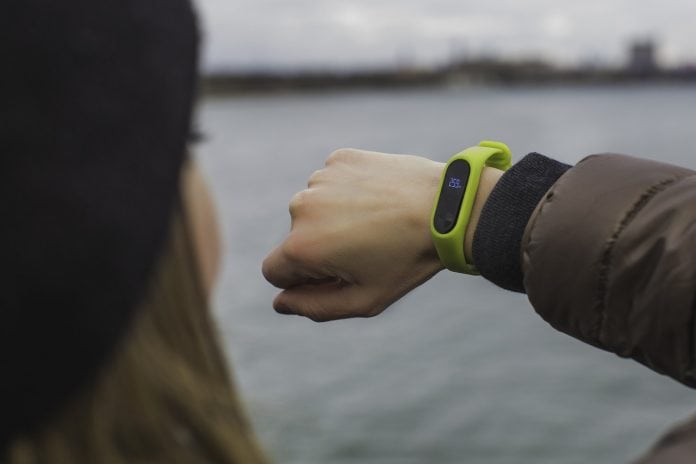
If you want to monitor and measure your physical activity, you should find the right fitness tracker.
Before you buy, consider your fitness goals. Are you trying to jump-start a lapsed fitness routine? Fine-tune an exercise regimen? Train for a triathlon? If you find the right fitness tracker, it will help you achieve your specific objectives.
Fitness trackers range from simple to sophisticated with price points to match and here is a huge variety. Here is how to find the right tracker to fit your budget, fitness, lifestyle, and fashion sense.
Keep in mind that a fitness tracker is like a gym membership: Only beneficial if you use it.
How Fitness Trackers Work
All trackers use sensors to monitor your movements, often connecting and syncing wirelessly with a computer or mobile device to store data about your day-to-day activities. The types of physical activities monitored vary by tracker, but can include number of steps taken, hours of sleep, heart rate, skin temperature, and perspiration levels.
Virtually every tracker uses an accelerometer to measure your steps and other up-down, side-to-side, and front-to-back movements.
Additional sensors may include:
• Heart-rate monitor to track your pulse during exercise and throughout the day,
• Gyroscope to determine if you’re standing, sitting, reclining, swimming, biking, etc.,
• GPS to track your location,
• Magnetometer to detect specific movements and determine what direction you’re moving in,
• Barometer to determine your altitude, which is used to calculate how many flights of stairs you climbed this morning to get to your office.
Some activity trackers let you sync with external heart monitors, smart bathroom scales, and other devices that offer more precise readings. When paired with the companion software or mobile app (or even third-party apps in some cases), trackers can give you insight into the habits that make up your lifestyle.
Other models offer smartwatch-like alerts for incoming calls, texts, IMs, and e-mail. And they can provide motivational support in the guise of challenges, badges, interaction with online friends, and a vibrating alert when it’s time to get up and go. They can even share data remotely with your doctor.
Types of Trackers
Fitness trackers are designed to accommodate a range of requirements. If you simply want to know how many steps you taking each day, look for an all-day tracker.
If you want details on the speed, pace, and stride associated with your steps, not to mention the route you traveled, look for a training tracker. These models can provide data tailored specifically to the routines of avid swimmers, golfers, skiers, weight lifters, or marathon runners. If you want a device geared to your favorite activity or sport, don’t be afraid to ask. Odds are good you’ll find one.
An all-day fitness tracker
All-Day Trackers
Here’s what they measure:
• Steps taken
• Stairways climbed
• Duration of exercise
• Active minutes
• Sleep time (divided into regular and REM)
Training Trackers
They do everything All-Day Trackers do, plus:
• Heart rate
• Breathing patterns
• Miles traveled
• Speed, pace, route
• Swimming pool lap times
• Altitude changes (helpful to skiers, cyclists, etc.)
• Music controls
Once you’ve decided on the functions you want, you can refine your options based on personal taste.
Style
Many trackers are designed to be worn on the wrist, but some can be worn as pendants or clipped to your clothing. In the past, devices tended to look purely functional, but manufacturers are now more conscious of style. Look for a greater variety of materials, shapes, and colors—and some models created in collaboration with bona fide fashion designers. Choose a look you’ll feel comfortable wearing every day.
Display
The more advanced trackers reveal their data—using words, numbers and symbols—on a watch face-like display. Others share that info via a simple LED light display or only via an app. When you sync the data onto your smartphone or computer, the tracker’s companion app not only archives the information, it also helps you interpret and analyze it. Before you make a final decision, preview the tracker’s companion app in the Apple App Store or on Google Play to make sure it lives up to your expectations.
Compatibility
Before you pull out your wallet, make sure the device is simpatico with your cell phone or computer. Some trackers sync only with Apple’s iOS. Others only with Android. And most do not work with Windows.
Accuracy
Trackers are not foolproof. They use sensors and algorithms to parse footsteps, punches thrown, stairs climbed, hours slept. That means there’s some degree of imprecision. If you need hard data, you may want to pursue a function-specific device. In general, heart rate monitors that strap to your chest and transmit info to your activity tracker are more precise than the in-device sensors applied to your wrist.
Battery Life
Depending on the sophistication of the device, battery life can stretch from one day to several months. A tracker with a color touchscreen and an armada of sensors will need to be charged more frequently than a simple band with a few LED lights on its face. It’s also worth noting that not all trackers are rechargeable. Some run on the coin cell batteries often used in cameras and calculators.
Water
How often do you encounter water when you work out? That’s an important consideration, too. Some trackers are just splash proof. Others can withstand a hardy shower—indoors or out. But if you’re going to wear your tracker in the pool, it should be waterproof as Fitbit Flex 2.


































